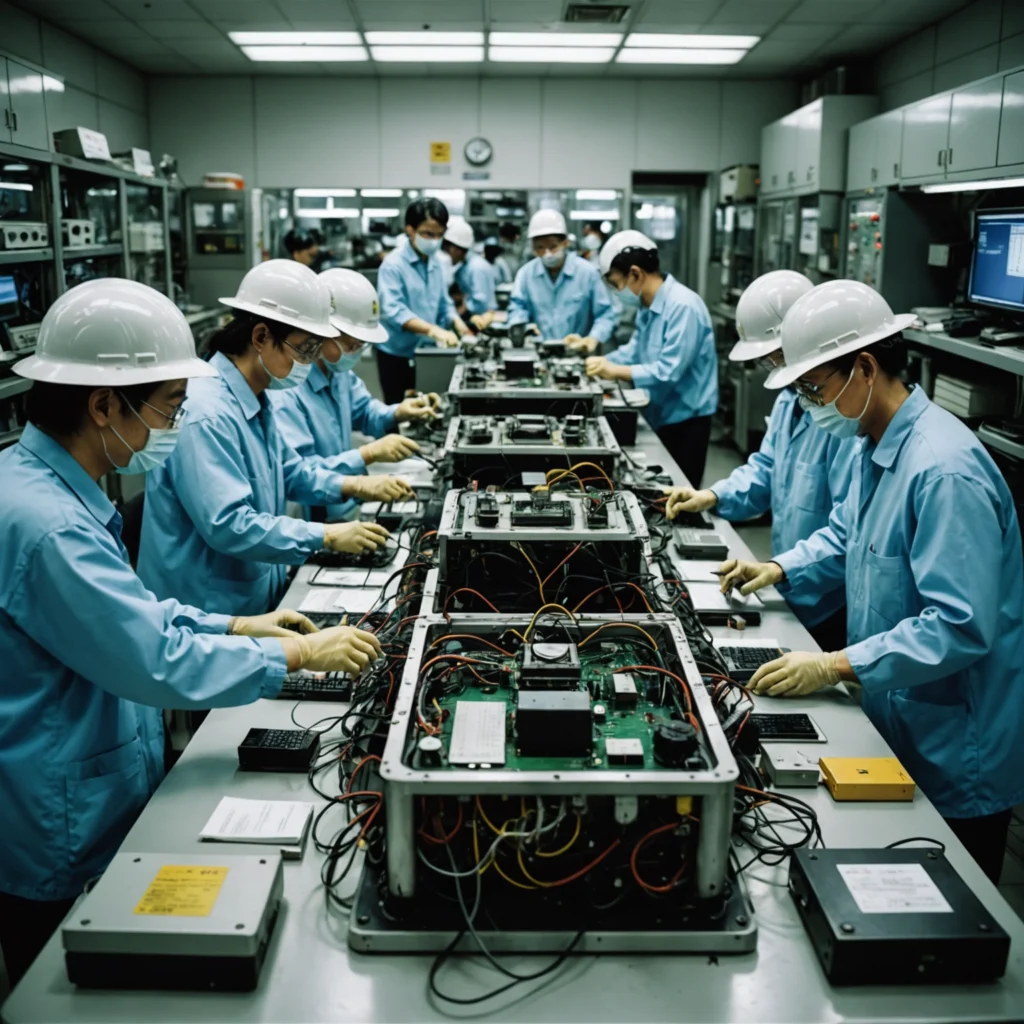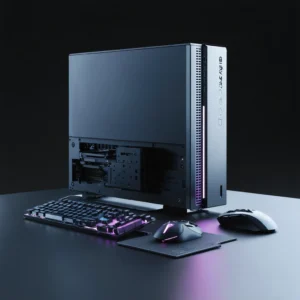
Introduction and Emerging Controversy
Taiwanese officials recently initiated a vigorous investigation into alleged wrongdoing that shook the global semiconductor industry. Authorities charge SMIC and several allied firms with a deliberate effort to poach engineers from Taiwanese companies. Consequently, government representatives and industry leaders assert that both SMIC and its network intentionally recruited highly skilled engineers. Moreover, Taiwanese state agencies and key semiconductor manufacturers expressed alarm at the potential transfer of sensitive intellectual assets. In addition, government spokespersons detailed how the alleged poaching plan could undermine the competitive advantage that Taiwanese firms have built over decades. Furthermore, the controversy compels major international players to reconsider their strategies and investments in semiconductor technologies.
Background and Context of the Dispute
Government officials and industry experts maintain that SMIC intentionally targeted professionals with deep technical expertise. For example, Taiwanese executives reported that recruitment teams engaged in aggressive tactics during job fairs and private meetings. In turn, these professionals expressed confusion and concern about confidentiality and loyalty issues. Additionally, insiders noted that engineering poaching strategies emerged amid intensifying cross-strait tensions and geopolitical rivalry. Therefore, several key trends surfaced:
- Heightened competition in semiconductor research;
- Increased recruitment efforts from foreign rivals;
- Focused intelligence gathering on technical know-how;
- Rising sensitivity toward national security and proprietary technology.
Indeed, these factors accelerated scrutiny and regulatory oversight, and various agencies now rigorously question recruitment practices.
Detailed Allegations and Investigative Measures
Investigators pursue the cause of alleged engineer poaching in a methodical manner. First, authorities review email records, social media posts, and official communications tied to recruitment campaigns. Second, government auditors conduct interviews with engineers and corporate management personnel. Third, regulatory bodies scrutinize contracts to gauge potential breaches of confidentiality. These sequential actions ensure that the investigation unfolds transparently and exhaustively. Moreover, law enforcement officials promise to expedite legal reviews once they compile adequate evidence. Consequently, prominent legal experts advise companies to tighten internal controls. Furthermore, the investigation kindles broader debate on talent mobility, favorable exchanges, and intellectual property risks within global technology sectors.
Recent Developments and Key Statements
Industry insiders routinely assert that SMIC invested resources to secure top technical talent. In contrast, Taiwanese authorities claim that certain recruiting entities intentionally bypassed standard protocols. Furthermore, both sides directly engage with international partners to recalibrate trust and compliance standards. Notably, a high-ranking Taiwanese official stated, “Our commitment lies in preserving an innovation ecosystem that protects our seminal research from import and export disruptions.” This unfaltering dedication prompts discussions in boardrooms, academic circles, and governmental summits, and it influences decision makers to adjust policies and regulatory measures. Consequently, experts recommend assessing every recruitment outreach initiative with a refined focus on safeguarding intellectual capital.
SMIC and Allied Firms: Corporate Dynamics and Strategic Objectives
SMIC operates with ambitious intentions that stretch far beyond conventional recruitment. Instead, the company employs a nuanced strategy that involves cultivating specialized skills and leveraging cross-border talent. Moreover, allied companies engage with engineers through various incentives including dynamic compensation schemes and career development prospects. The following numbered list outlines their strategic objectives:
- Capture advanced semiconductor technologies;
- Accelerate research and development cycles;
- Enhance global standing in microchip production;
- Forge international strategic alliances;
- Secure long-term access to intellectual resources.
These definitive initiatives enable both SMIC and its partners to align corporate interests with geopolitical influences. Notably, several external analysts voice concern regarding the long-term consequences such strategies may impose on regional stability and technological sovereignty. Consequently, a systematic, risk-averse approach now emerges as a critical recommendation for all involved parties.
Economic and Geopolitical Implications
Economic experts closely examine the direct impact of these disputes on the global semiconductor supply chain. In addition, commentators argue that any shift in recruitment policies may signal deeper geopolitical instability. For instance, the alleged poaching incident prompted a detailed table analysis outlining market impact, potential risks, and strategic advantages. Below is an example table used by analysts:
| Parameter | Pre-Incident Status | Post-Incident Outlook |
|---|---|---|
| Domestic R&D Investment | Steady Growth | Accelerated Efforts |
| Talent Mobility | Controlled Exchange | Heightened Competition |
| Intellectual Property Security | Robust Safeguards | Increased Vulnerability |
In addition, prominent economic advisors stress that geopolitical tensions trigger economic ripple effects that ultimately influence global trade policies. Therefore, a comprehensive assessment of market, security, and innovation facets now becomes indispensable.
Responses from Industry Leaders and Policy Makers
Policy makers and multinational enterprises now align on the crucial need to respond decisively. For example, government reforms emerge rapidly to tighten export controls and recruitment protocols. In tandem, industry forums convene experts to develop standard guidelines for talent acquisition in sensitive sectors. In addition, corporate leaders initiate dialogues to clarify the boundaries between open recruitment practices and national security obligations. Furthermore, industry roundtables frequently incorporate transitional discussions regarding international regulatory convergence and intellectual property rights. Hence, these comprehensive responses aim to balance technological collaboration with rigorous protection measures.
Paths Forward and Future Negotiations
Authorities now encourage dialogue between academic institutions, industry stakeholders, and regulatory bodies. Moreover, several strategic proposals guide future actions:
- Establish clear international guidelines on talent mobility;
- Initiate bilateral discussions between Taiwan and mainland policy makers;
- Enhance cybersecurity to prevent intellectual property leakage;
- Promote transparent recruitment strategies that emphasize legal compliance;
- Implement robust legal frameworks that deter aggressive poaching practices.
Subsequently, both parties prepare to negotiate amicable resolutions that protect investments and foster technological innovation. Additionally, experts advocate for enhanced collaboration between government bodies and corporate entities to monitor and adjust the changing dynamics. Consequently, future negotiations promise to feature balanced policies that protect national interests while promoting competitive growth in the semiconductor industry.
Conclusion: Sector Impact and Long-Term Outlook
The alleged poaching scandal triggers significant concerns that transcend national borders. Industry analysts, government officials, and corporate leaders now operate within an environment that demands vigilance and adaptation. Consequently, the fallout from the controversy encourages a widespread reexamination of recruitment policies and intellectual property protection. Moreover, companies commit to revising internal controls and strengthening cross-industry collaborations. In conclusion, the dispute redefines the global competitive landscape. Furthermore, the incident offers a vital lesson on maintaining a delicate balance between competitive talent acquisition and national security interests. Overall, the semiconductor community now navigates uncertainties while charting courses for sustainable growth and resilient technological development.







